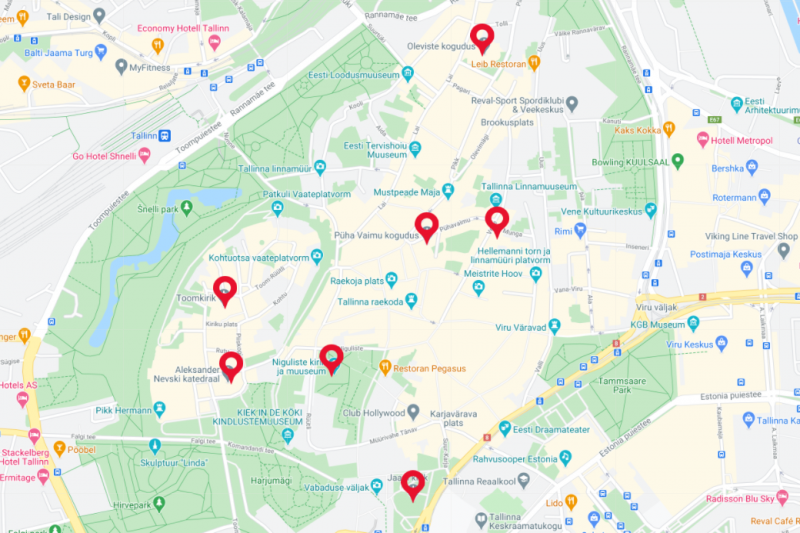
Church Locations
From top to bottom
1. St. Olaf's Church
2. St. Peter and Paul's Cathedral
3. Church of the Holy Spirit
4. St. Mary's Cathedral
5. Alexander Nevsky Cathedral
6. St. Nicholas' Church
7. St. John's Church
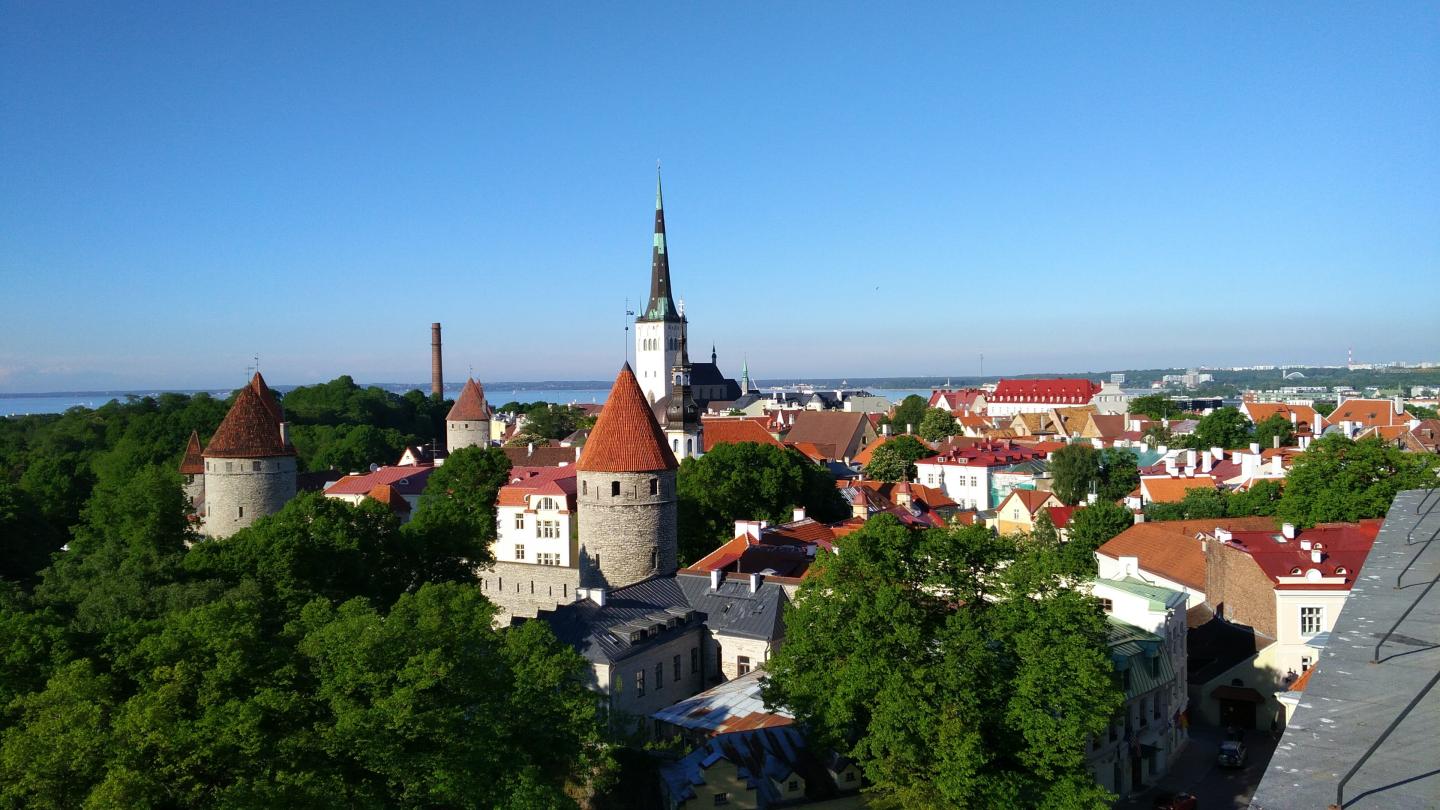
The city of Tallinn, whose medieval centre is listed by UNESCO, is visited for its castle, art museum, but also for its churches, which bear witness to the city's rich history through their diversity.

From top to bottom
1. St. Olaf's Church
2. St. Peter and Paul's Cathedral
3. Church of the Holy Spirit
4. St. Mary's Cathedral
5. Alexander Nevsky Cathedral
6. St. Nicholas' Church
7. St. John's Church
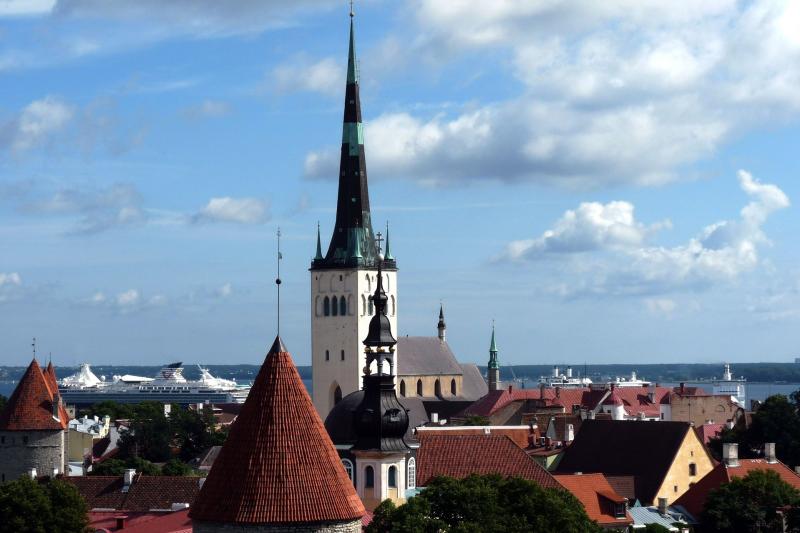
St. Olaf's Church is the main attraction in Tallinn, its most famous monument. The church was founded in the 12th century by the Scandinavians who occupied the city at that time and was named after King Olaf II of Norway. The building has been preserved as it was rebuilt in the early 15th and 16th centuries. The church also had to be partially rebuilt after fires in 1625 and 1820. The tower, which was destroyed in the fire of 1820, was restored in 1840, and at the same time, the neo-gothic interior of the church was completed.
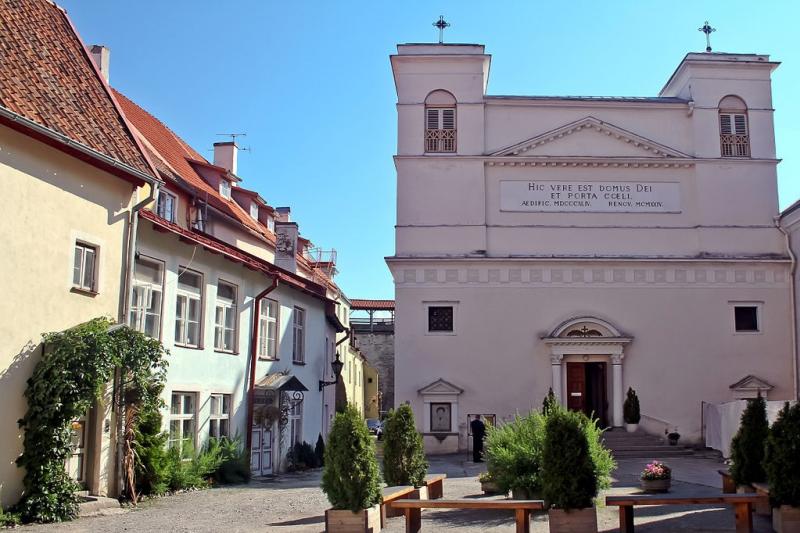
St. Peter and Paul's Cathedral was designed by Carlo Rossi and completed in 1841. It is the Catholic Cathedral of Tallinn. During the period of Swedish rule (1561-1721) Catholicism was banned. When Sweden ceded Estonia to the Russian Empire at the end of the Great Northern War, the new authorities introduced religious freedom. In 1799, the Catholic parish grew and took over the use of the former refectory of St. Catherine's Monastery, which had remained closed since the ban. The refectory was used as a place of worship and is located on the site of the present church. In 1841, as the place of worship had become too small, a new church was designed by Carlo Rossi.
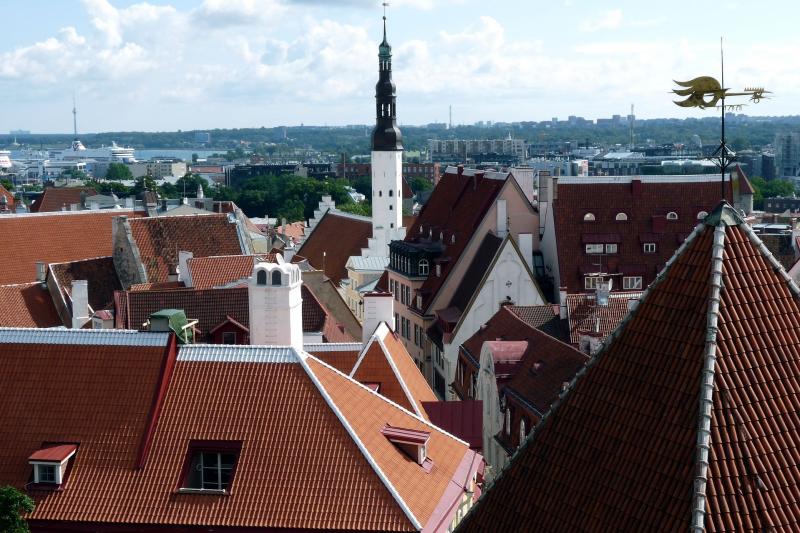
The Church of the Holy Spirit is the smallest medieval church in Tallinn. The first written documents mentioning the church date back to 1316. Between 1375 and 1380 several reconstructions and additions were made to the church. Originally, the church was a single-nave church, but as the congregation grew, a side nave was added. Major changes to the façade probably took place after the fire of 1433. Minor changes were also made in the 17th century when a new Baroque bell tower with two open balconies was built on top of the octagonal tower of the church, which resembles the exterior of the town hall in its appearance.
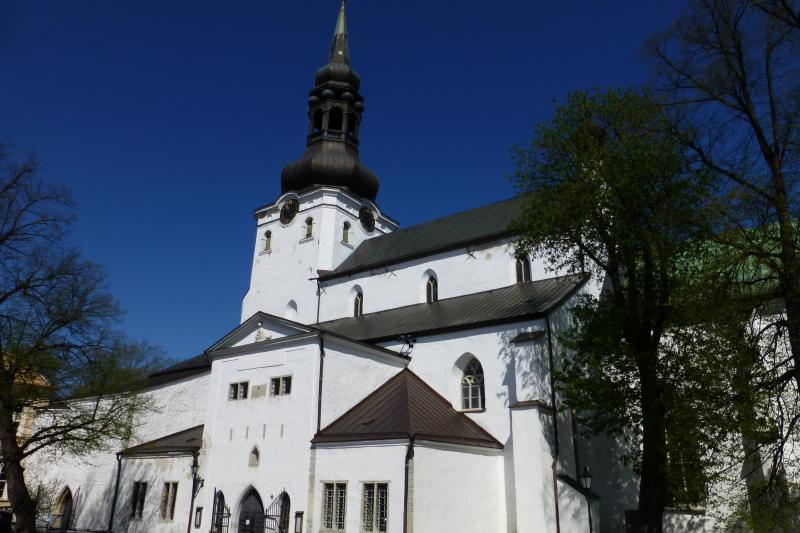
Tallinn Cathedral is the main Evangelical Lutheran church in Estonia. It dates back to the 13th century, probably to the first half of this century. Between 1430 and 1460 the church building was reconstructed as a three-nave basilica. The church and a large part of the buildings in Toompea were destroyed in the fire of the Toompea district in 1684. The Gothic-style bell tower of the cathedral was destroyed, so a new Baroque bell tower was built in 1778-1779.
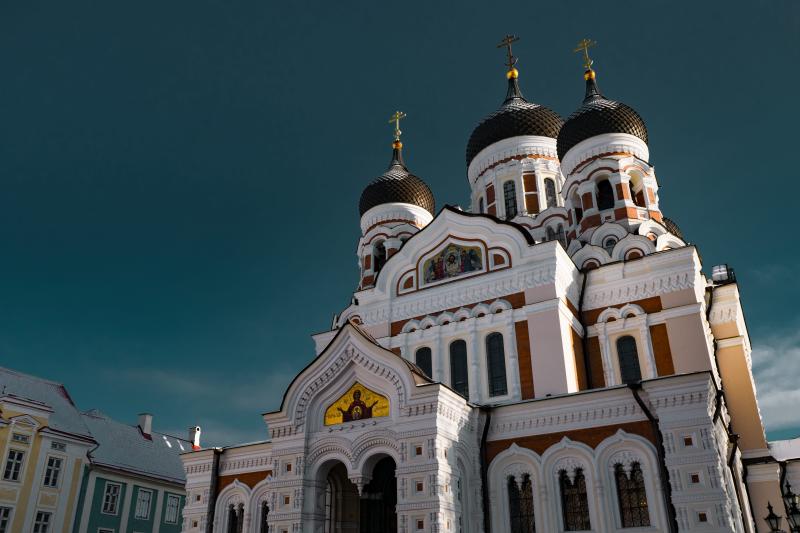
Aleksander Nevsky Cathedral is a 19th-century Orthodox church. The construction of this sanctuary, based on Russian church architecture, began in 1894 and was completed in 1900. The church was named after Alexander Nevsky (1220-1263), the Prince of Novgorod. When Estonia gained its independence after the First World War, the Estonian authorities wanted to demolish it as it was the symbol of a period of Russian occupation. However, after the Bolshevik revolution, there were a large number of Russian refugees in the capital and the cathedral was not demolished. It was, however, closed by the German authorities who invaded Estonia in 1941. It was only regained its use after Estonia's independence in 1991.
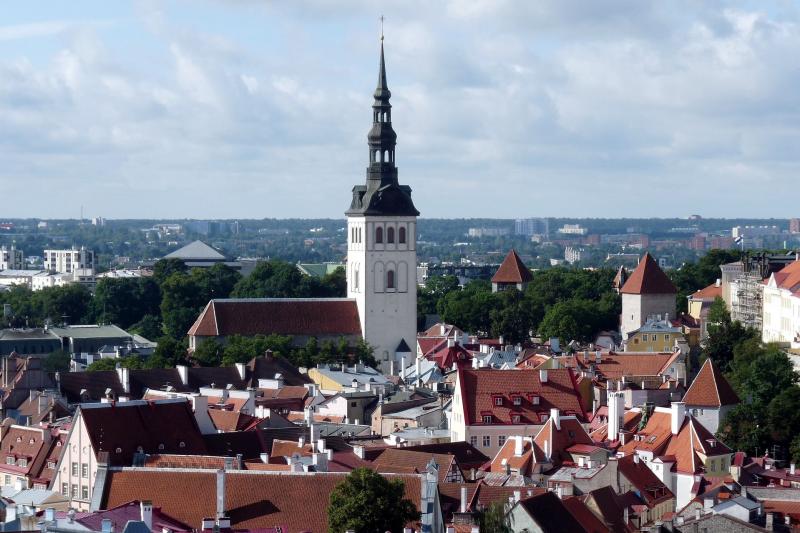
St. Nicholas' Church was founded in 1230 as the centre of a settlement of German merchants from Gotland. The church was completely rebuilt in 1405-1420 when a new choir was built and the then long building was rebuilt according to the principles of the basilica. From 1486 to 1493, the Matthew Chapel (14th century) was rebuilt as Anthony's Chapel. The new tower of the reconstructed church was completed in 1515. The west tower of the church was rebuilt in 1682-1696 and a new baroque bell tower was built. After its restoration after the Second World War (1953-1981), the church became an art museum and a concert hall.
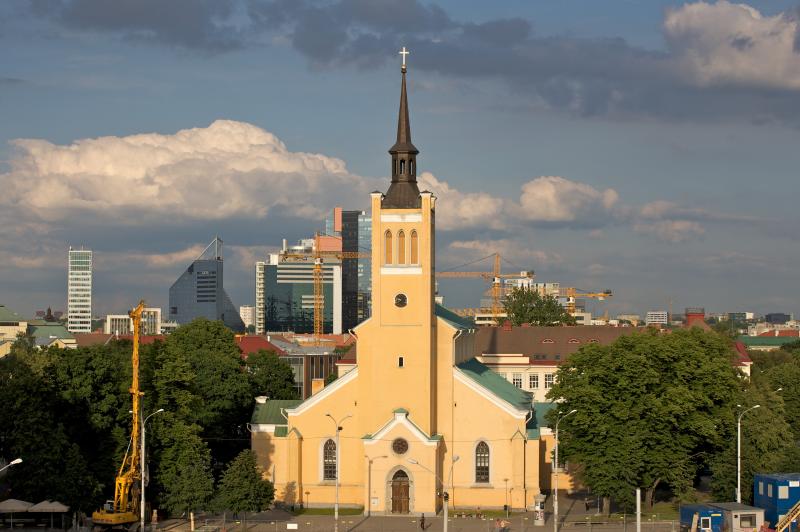
St. John's Church in Tallinn is one of the oldest neo-Gothic churches in Estonia. The church was built between 1862 and 1867 and was designed by the architect Christoph August Gabler (1820-1884). At the end of the 1930s, during the construction of the War of Independence monument on Vabaduse Square, the church came close to destruction but was finally preserved by the city authorities. The author of the church's stained-glass windows is the artist Eva-Aet Jänes.